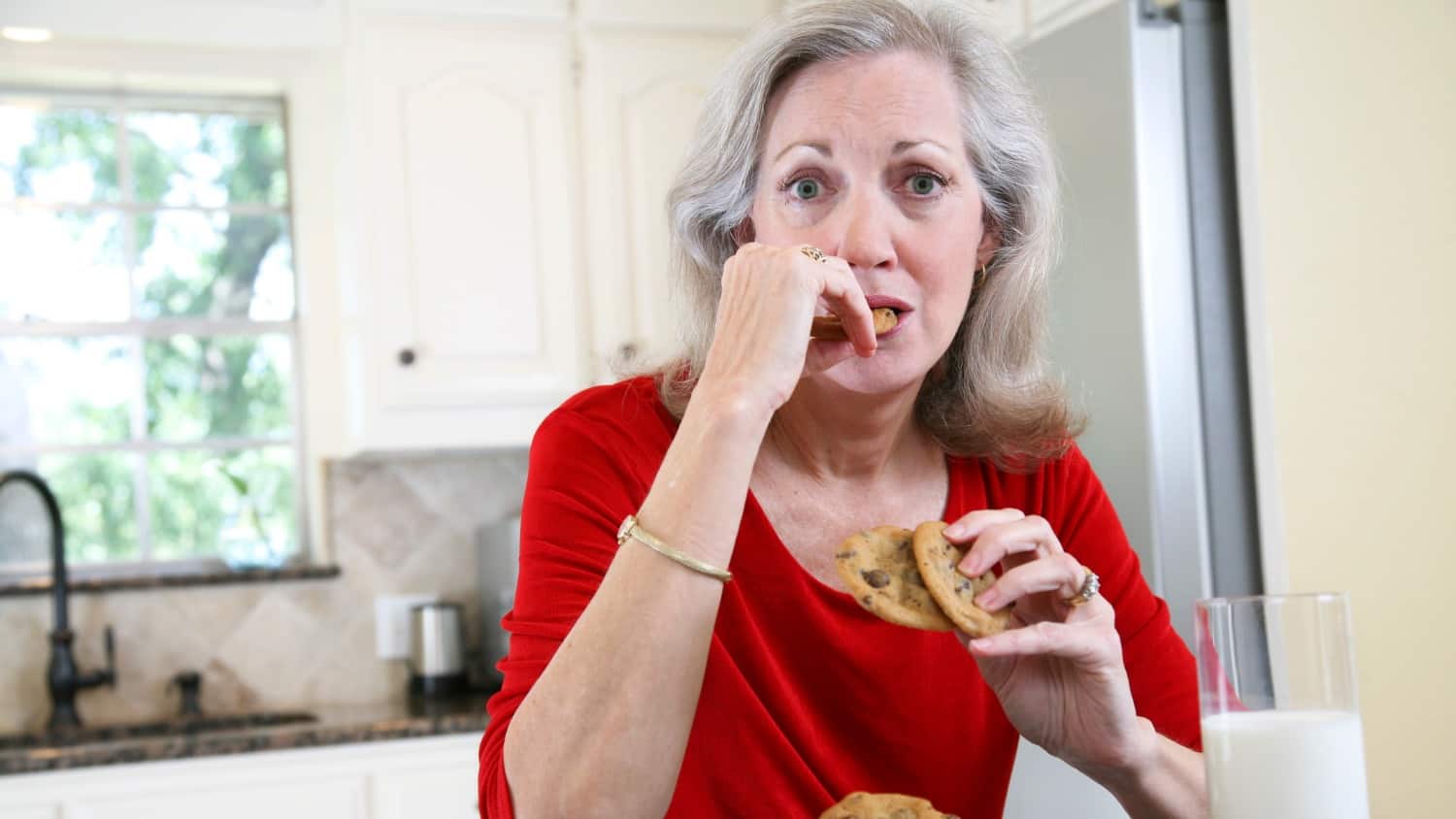
Senior Weight Loss 101: What Is the Microbiome Diet?
Our oldest daughter gave us a very special gift this past Christmas: two round trip tickets from Arizona to Minneapolis so we could spend four days after Christmas with her family.
We laughed as we played games like Spoons, Telestrations, and Scattergories; nibbled on nuts, Christmas cookies, and cheese and crackers; caught up on the activities of our college aged granddaughter and high school sophomore grandson and ate some more.
Since the weather was quite cold, our activity level plummeted to the steps we took around their home and up and down their stairs – a far cry from the usual lengthy walks and strength training exercises we fairly consistently do when we’re home.
Jeans Don’t Lie
So, you guessed it… the far tighter fit of my jeans told the story when we arrived home. When I realized it could take me weeks to lose the weight I’d managed to accumulate in just four days, I have to confess I felt pretty down.
Luckily, my mind kept returning to the book I’d finished reading before our trip: The Microbiome Diet by Dr. Raphael Kellman.
In his book, he shared stories about the hundreds of patients he’d worked with who had tried many different diets over many years without much success, but who were able to lose weight – and not experience food cravings – on the eating plan he recommended.
Why Not Give It a Try?
Since I was going to be interviewing Dr. Kellman soon for the monthly radio show I host, I decided to test his approach on myself.
I’ve struggled with weight issues all my life, have tried many diets, but finally had some success losing weight about six years ago when my husband and I went to a more plant-based eating plan. But any time I veered from this approach, I would put on pounds rapidly.
Quite honestly, since Dr. Kellman’s plan includes eating a variety of fruits and vegetables, I didn’t know how much difference it would make.
However, it also involved eliminating gluten and dairy products for three weeks. That was a bummer since my absolute weakness is bread (albeit good, organic whole grain bread) and I’ve never met a cheese I didn’t love. I knew eliminating gluten and dairy would be my biggest challenge.
But there was light at the end of this diet plan tunnel: it was only necessary to totally eliminate these two things for three weeks.
After that period, Dr. Kellman recommended gradually reintroducing them into your food plan to see how your body would react to them. I figured I could handle three weeks.
What Is the Microbiome and the Microbiome Diet?
Trillions of bacteria live in our gut and elsewhere in our body. This community of bacteria comprise the microbiome, and their cells outnumber our own cells 10 to 1.
The microbiome impacts virtually every organ and system in our body, producing everything from vitamins to neurotransmitters that our body needs to function optimally.
On this diet, it’s not so much a matter of how much you eat, but rather eating the right foods that contribute to the health of our microbiome. For a full list of the right foods and the foods to avoid, check out Dr. Kellman’s book The Microbiome Diet.
Some of these right foods include:
- animal proteins (beef, chicken, lamb, venison, low mercury fish, shellfish, and dairy products from goat’s or sheep’s milk),
- vegetable proteins (such as nuts and seeds),
- fermented food (e.g., fermented vegetables, kimchi, raw sauerkraut, kefir or yogurt from sheep or goat’s milk),
- fruits (in moderation) and vegetables,
- grains and near-grains (brown rice, millet, quinoa), legumes (beans of all types),
- oils (avocado, ghee, coconut),
- spices (cinnamon and turmeric),
- nuts and seeds.
Some of the major foods to avoid include:
- cow’s milk dairy products,
- corn and cornstarch,
- high-fructose corn syrup,
- juices,
- peanut butter,
- processed meats or deli meats,
- processed or packaged foods,
- sugars and gluten (found in wheat, barley, and rye-based foods).
Dr. Kellman includes meal plans and some really interesting recipes in both of his books which make the process of staying on this diet much easier.
The Bottom Line: Did It Work for Me?
I did shed the pounds I needed to shed, but most surprisingly to me was how much better I felt. I was so used to feeling bloated that it was rather a shock not to feel that way. What really amazed me was that I actually felt happier.
Since Dr. Kellman’s The Microbiome Breakthrough book outlines how the microbiome diet can help relieve anxiety, brain fog, depression, concentration, and focus issues, I probably shouldn’t have been surprised by this outcome, but it definitely was a revelation.
So, if you’ve tried a variety of diets without much success, this approach to weight loss might be something worth researching and exploring.
How many diets have you tried over the years? What success did you have with them? What has worked for you? Have you tried the microbiome diet approach? If so, what was your experience with it? Please share with our community!






